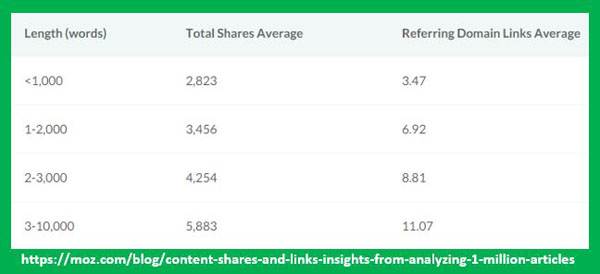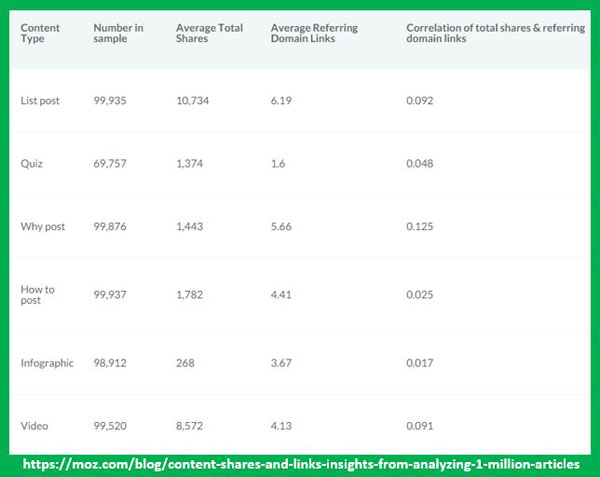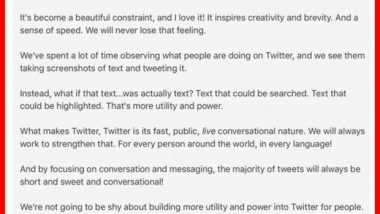Last summer BuzzSumo and Moz combined their knowledge and data to analyze the shares and links of more than one million blog posts. They uncovered some key points on how you should be blogging if you want more shares or links (and, thus, more traffic to your website).
Here are a few of their top findings:
85% of text-based articles contained less than 1,000 words (out of a sample of 489,128 articles).
Long content consistently gets higher shares and more links. Check out the following graphic for details. Note how longer articles get more shares on average AND more links from other domains.

People share and link for different reasons. There was no overall correlation of shares and links among their total sample of one million blog posts.
Long articles with images interspersed every 75 to 100 words get double the shares of articles with fewer images.
Image list posts where each list item has an accompanying image get more shares.
75% of blog posts get zero external links (out of a random sample of 100,000 blog posts). That implies that the blog posts consist of poor content and/or that bloggers do little effective promotion. As the study authors noted, “People are very poor at amplifying their content.”
Most blog posts get few Facebook interactions (likes, comments, or shares). In a random sample of 100,000 posts, over 50% had fewer than two Facebook interactions.
Links are harder to get than shares. In a sample of 750,000 well-shared blog posts, over 50% still had zero links pointing to them.
List posts and video posts get more shares than most other content formats. If you want to create content that gets people coming to your website, write more list posts and feature more videos.
Authoritative opinion-shaping journalism attracts more referral links from domains. As the study authors noted, such journalism “sits within the content sweet spot.”
Research-backed content also gets more referral domain links. Both research-backed content and opinion-shaping journalism get more shares and significantly more links.
Entertaining videos and quizzes are more likely to be shared than to be linked to. Entertainment content can go viral but yet generate few links.
Why posts, on average, generate more referring domain links that other content formats. And they have a higher correlation between shares and links. Why posts explain why something is important, why something is happening, or why you should care about something.
Most infographics perform poorly. 50% had zero referring links (out of a sample of 53,000 infographics). And 25% had less than ten shares across all social networks. Note: Most infographics are poorly designed, feature weak content, and take too long to consume.

List posts out-perform all other content in terms of average total shares AND average referring domain links.
Videos are second best at generating average total shares (but don’t perform as well at generating links).
Why posts and how-to posts generate great link juice but don’t do nearly as well at getting social shares.
About John Kremer
John Kremer is author of 1001 Ways to Market Your Books, the Relationships Matter Marketing program, and many other books and reports on book marketing, Internet marketing, social media, and book publicity. -- John Kremer on Book Marketing.

